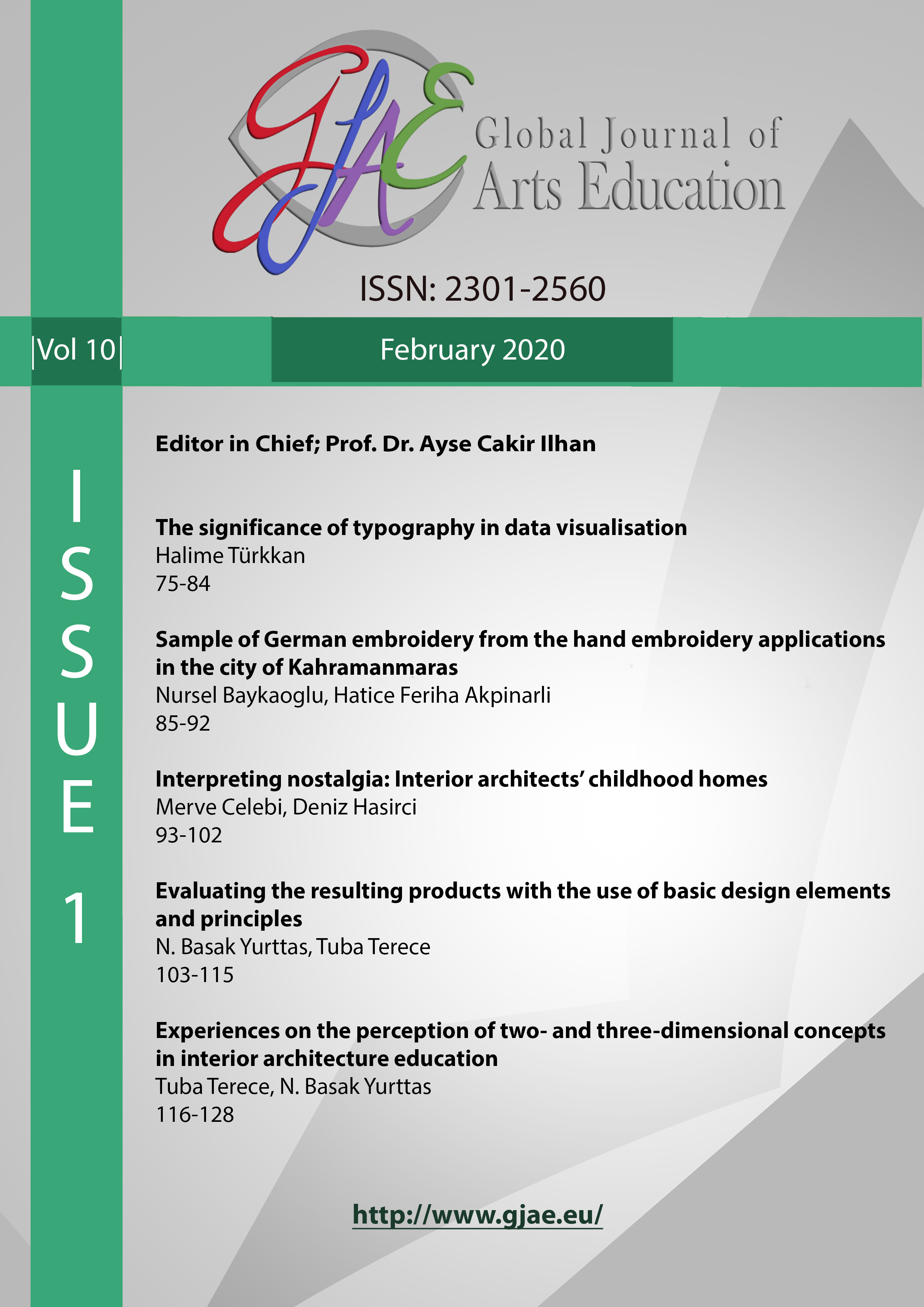Sample of German embroidery from the hand embroidery applications in the city of Kahramanmaras
Main Article Content
Abstract
Forming one of the most important branches of our culture and traditional arts, embroidery was born by sewing in a decorative way and it is worth mentioning that it is as early as humanity. Embroidered clothing on the sculptures excavated and the narration that the daughter of Noah in Hebrew history wears an embroidered belt shows that this branch of art goes back to earlier times. Hand embroidery, which is the products of intelligence, skill and subtle wit, has reached the current time by preserving its value. Out of a great many embroidery techniques reaching large public masses, a technique called ‘German Embroidery’ was encountered in the researches carried out in the city of Kahramanmaras and its towns in the years 2013–2014. According to the information obtained from the source people in the research carried out in the city of Kahramanmaras, German Embroidery dating back to earlier times is not produced today; however, we are likely to find pillows, clothes and dresses embroidered with German Embroidery in houses. In the current paper, embroidery samples were determined in order to unveil this technique that was embroidered on any kind of cloth with a plain surface and it was aimed to make the embroidery alive and to promote it by analysing the way of embroidering.
Â
Keywords: Embroidery, ornament, technique, traditional.
Â
Â
Â
Â
Downloads
Article Details

This work is licensed under a Creative Commons Attribution 4.0 International License.
Authors who publish with this journal agree to the following terms:
- Authors retain copyright and grant the journal right of first publication with the work simultaneously licensed under a Creative Commons Attribution License that allows others to share the work with an acknowledgement of the work's authorship and initial publication in this journal.
- Authors are able to enter into separate, additional contractual arrangements for the non-exclusive distribution of the journal's published version of the work (e.g., post it to an institutional repository or publish it in a book), with an acknowledgement of its initial publication in this journal.
- Authors are permitted and encouraged to post their work online (e.g., in institutional repositories or on their website) prior to and during the submission process, as it can lead to productive exchanges, as well as earlier and greater citation of published work (See The Effect of Open Access).

